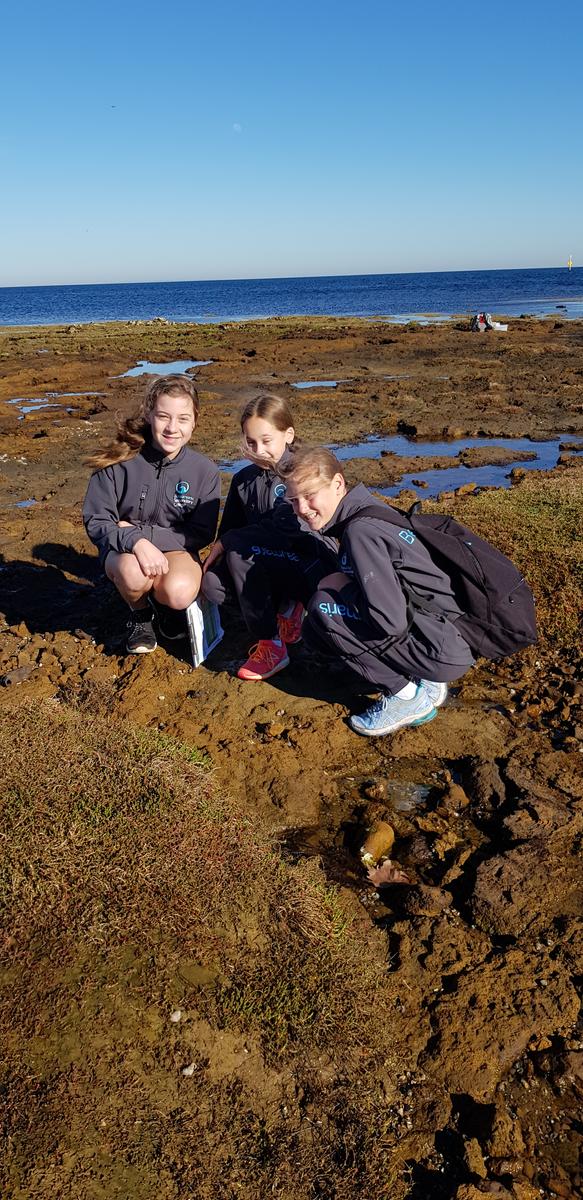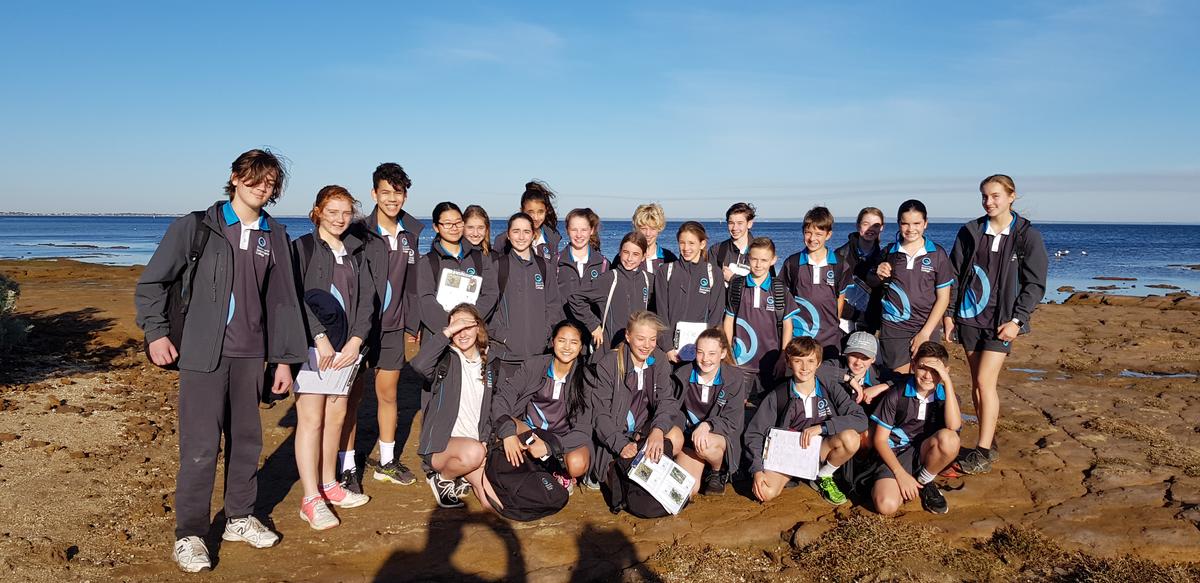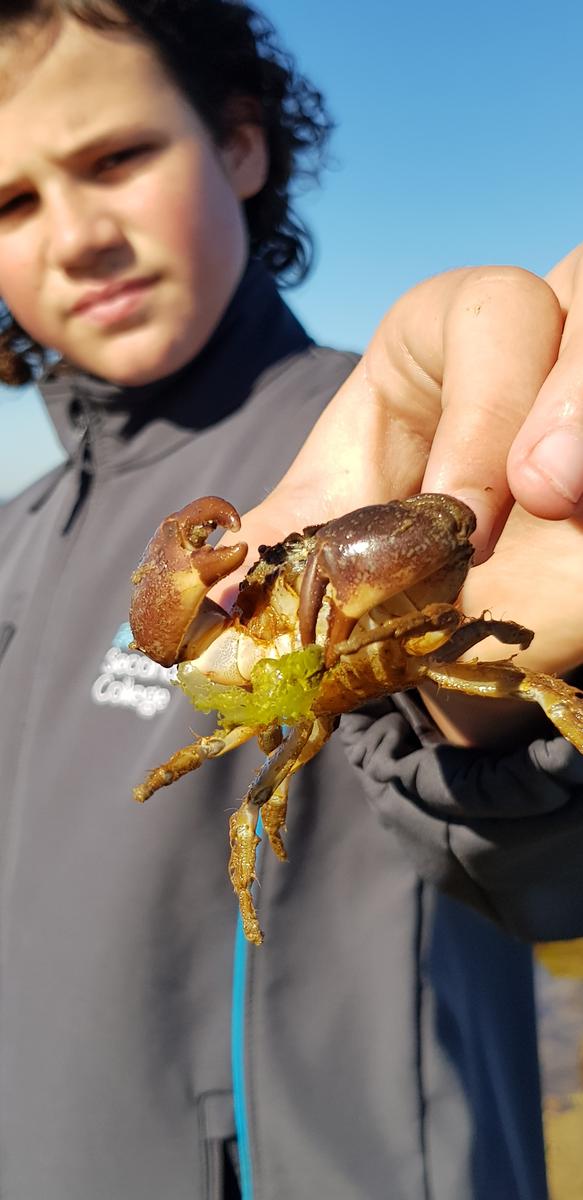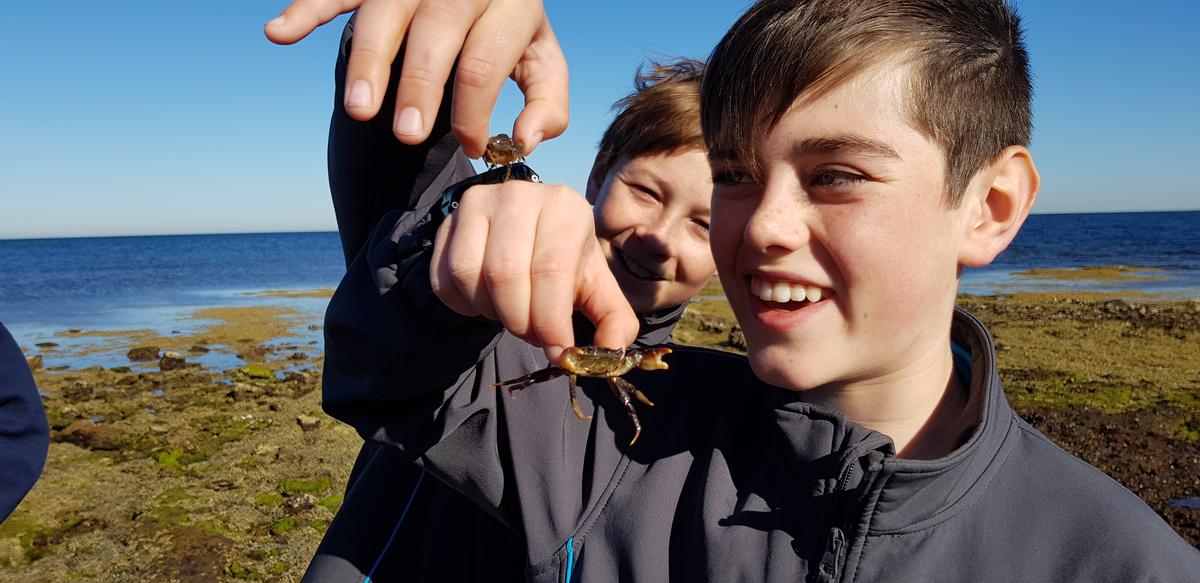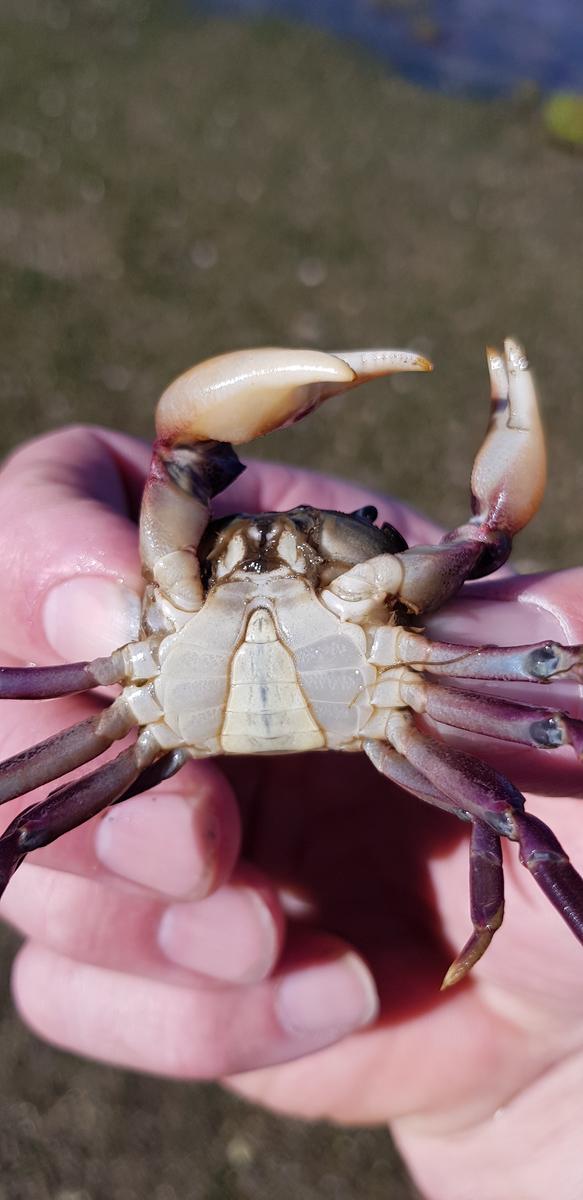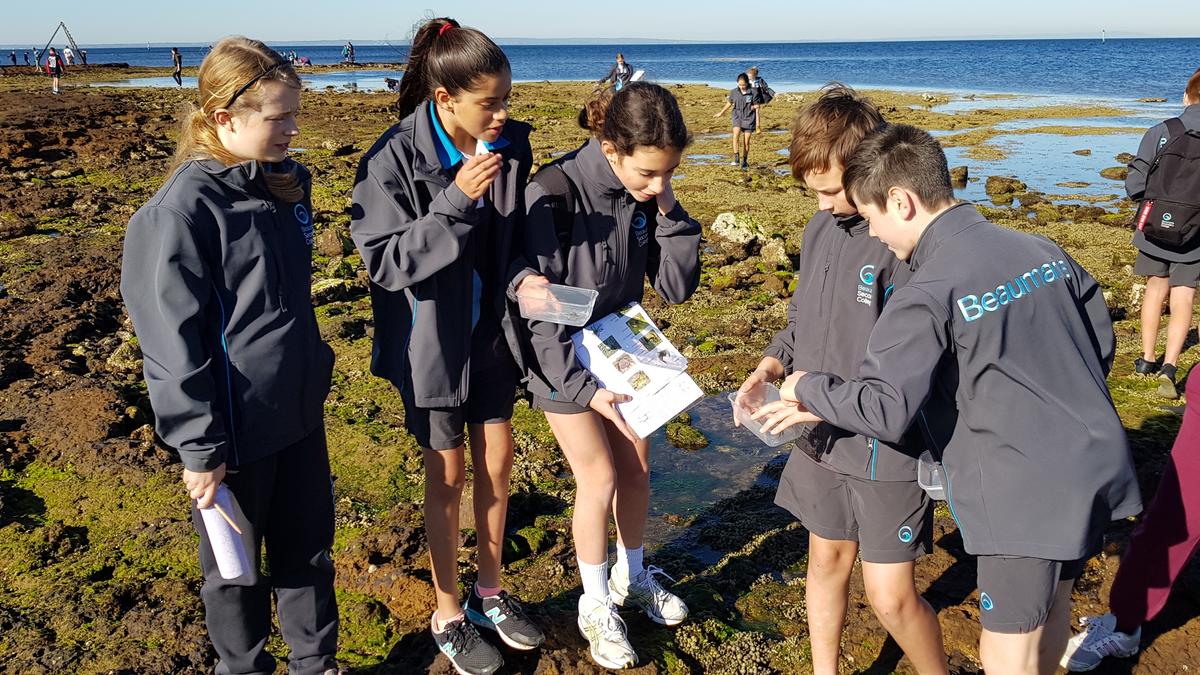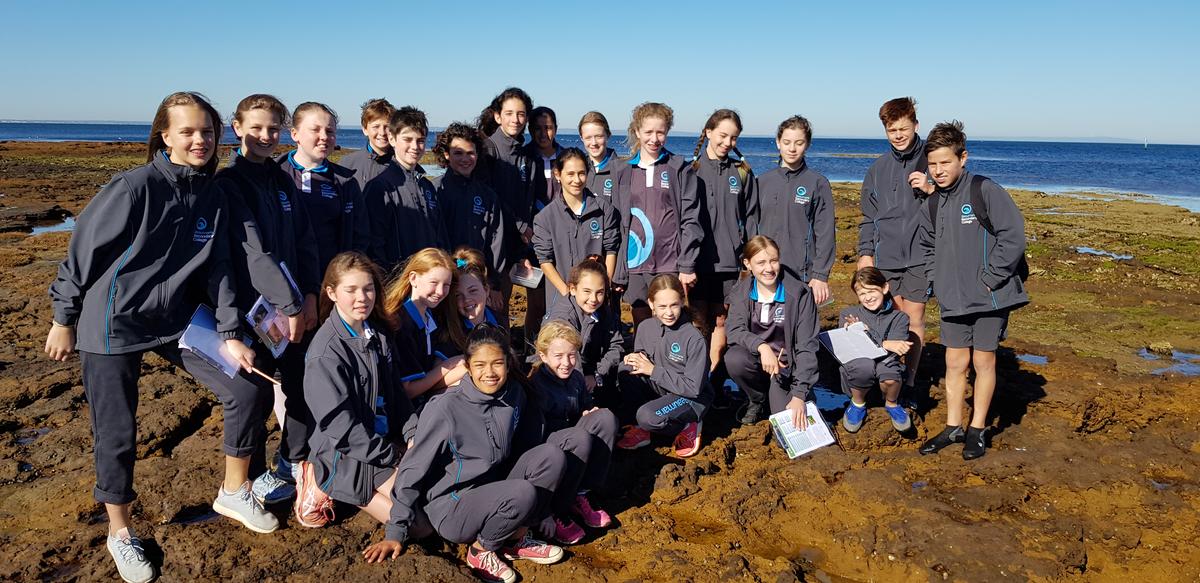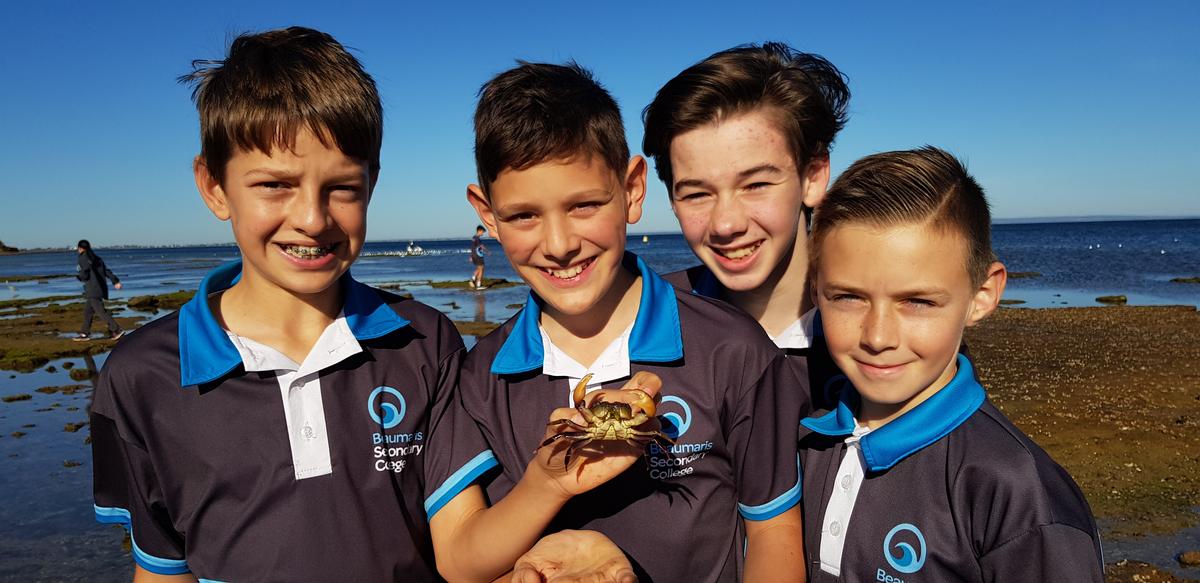Marine Care Youth Ambassadors
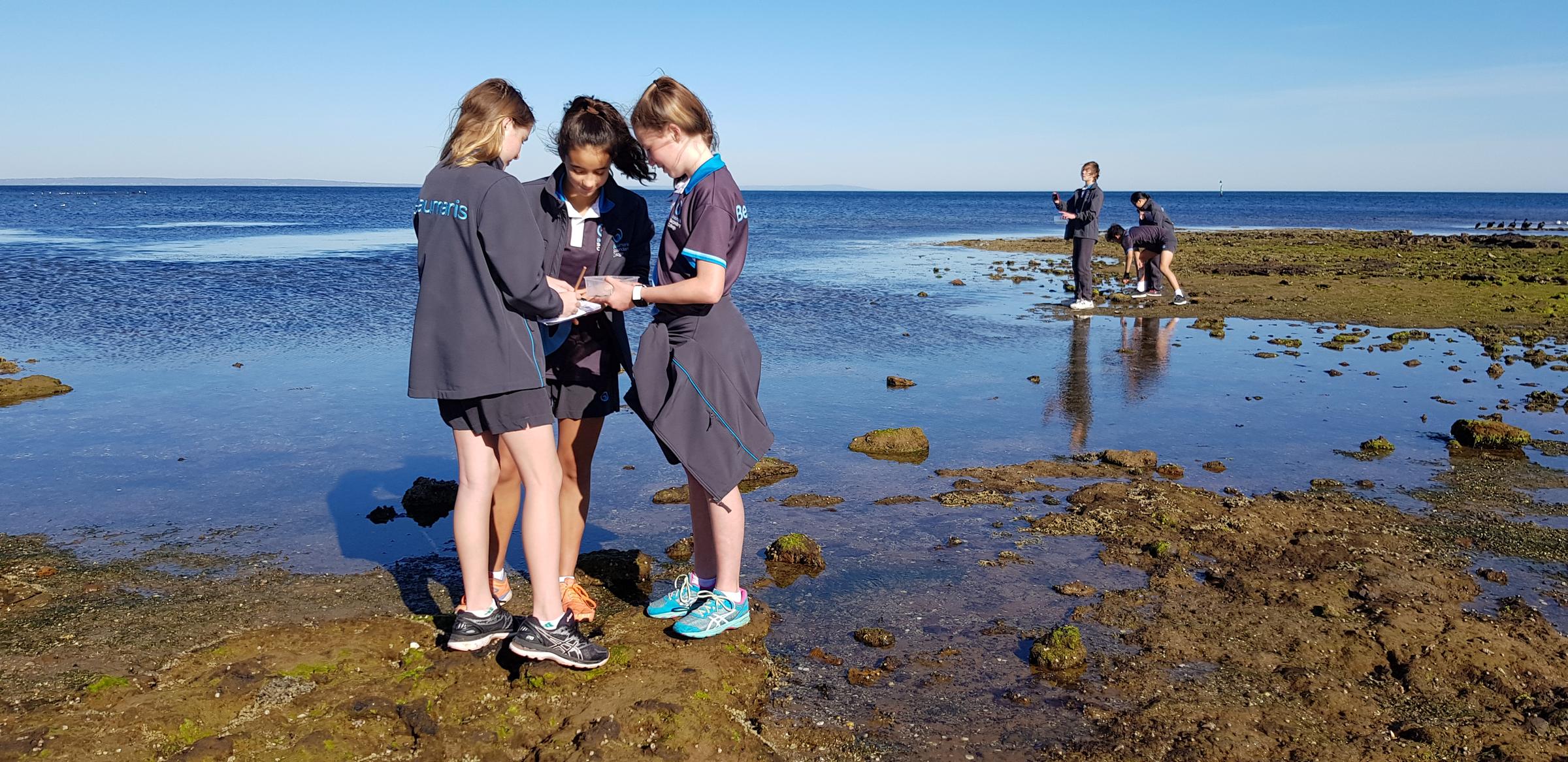
Marine Care Youth Ambassadors
Beaumaris Secondary College has been developing a new program for students who are interested in learning about, exploring and caring for the Marine Environment. The Marine Care Youth Ambassadors program was launched this term with an amazing response from students. The program will involve opportunities for the students to sign up for a range of activities largely be based around Ricketts Point Marine Sanctuary which may include:
- ClimateWatch Survey
- Rock Pool Sampling and species monitoring
- Drain Detectives (EPA)
- Fossil Hunts
- Beach Clean Ups & Nurdle hunt
- Photo Challenge
- Snorkelling Sessions
- Great Victorian Fish Count
- Sea Slug Census
ClimateWatch and Crabs Excursion
Our first excursion as part our Marine Care Youth Ambassadors program involved two half day excursion to Ricketts Point Marine Sanctuary on Thursday 23rd May where students collected ClimateWatch observations and completed a Crab Population Survey.
On Thursday the 23/05/19, the Beaumaris Secondary College ‘Marine Care Youth Ambassadors’ headed down to Ricketts point, to conduct surveys of crab species and make observations for Climate Watch. What is ClimateWatch? ClimateWatch is a citizen science program created by the organisation Earth Watch, to understand how changes in temperature and rainfall due to climate change could affect our native wildlife. We were assigned groups and explored to find a few different species, make observations about them and take photos of them. We recorded data like the numbers of species and what certain types of birds, plants and other native wildlife are doing – for example if a magpie was creating a nest, or if a tree had flowers that were blooming. By the end of the session we were all able to depict key features from marine and plant life to be able to tell apart the species . The observations we recorded will give data to climate watch, which they will use to better support the environment by monitoring the effects of climate change on these ecosystems.
In our next activity we observed the native and the introduced plant and crab life. For around an hour, the marine care groups participated in a crab survey to measure the populations of crab species. We were given a clipboard, a ruler to measure them and off we went! Under and amongst the rocks was were the crabs were found! We were asked to record the size, species and gender of the crabs. On our clipboards was a guide with photos of the native species, and the ones we were looking put for most.... an introduced species.......... the European Shore Crab!! We identified the European Shore Crab by their distinct ‘nicks’ on their sides. We were taught how to find and hold them, whilst tones of photos were taken. We had such a great day learning all about our local species and discovering the wonders under the rocks!
By Eve Dartnell, Indi Roberts and Emilia Gilroy-Smith

